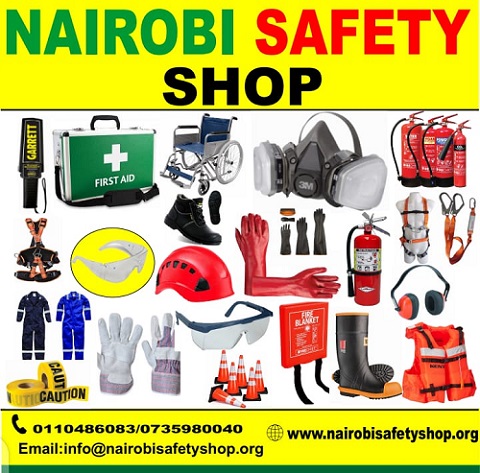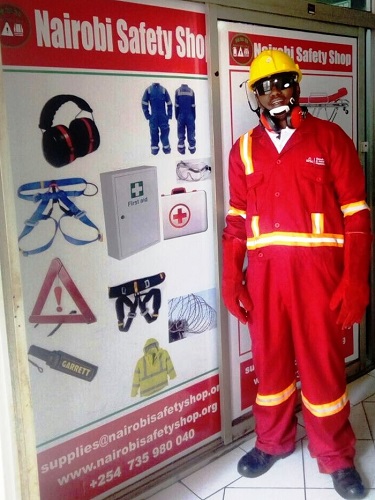In an ever-changing world, ensuring safety is paramount for individuals and organizations alike. I am Ambassador Steve Mbugua, globally recognized as the Ambassador of Safety, and I have dedicated my career to advocating for effective safety training and awareness. With extensive experience in the field, I have seen firsthand the transformative impact that proper safety education can have. This article explores the numerous benefits of safety training, emphasizing how it not only reduces accidents and enhances compliance but also fosters a culture of safety that boosts productivity and morale. By investing in comprehensive safety training, we can create safer environments that empower people to thrive.
1. Enhances Personal Safety
Safety training equips individuals with the knowledge and skills necessary to protect themselves from potential hazards in their environment. For example, first aid training enables employees to respond quickly to injuries, potentially saving lives. PPE training ensures that workers use the correct equipment to shield themselves from harmful substances or dangerous situations. As a result, personal safety is significantly improved, leading to fewer accidents and injuries.
• Example: An employee trained in fire safety can recognize fire hazards, know how to use a fire extinguisher correctly, and understand the importance of fire drills. This knowledge can prevent fire-related injuries and fatalities.
2. Improves Organizational Safety Standards
Implementing safety training across an organization standardizes safety procedures and protocols. This consistency ensures that all employees adhere to the same high standards, reducing variability in safety practices and minimizing risks. Regular training updates and refreshers help keep everyone informed about the latest safety regulations and best practices.
• Example: A manufacturing company conducts annual lockout/tagout training to ensure that all workers understand how to safely shut down and service machinery. This practice minimizes the risk of accidental machine startups, which can cause severe injuries.
3. Reduces Legal and Financial Liabilities
Organizations with robust safety training programs are better equipped to comply with local, state, and federal safety regulations. Compliance reduces the risk of legal penalties, fines, and lawsuits that can arise from workplace accidents. Additionally, a safer workplace lowers insurance premiums and workers’ compensation claims, leading to significant financial savings.
• Example: A construction company that trains its employees in fall protection can prevent falls from heights, which are a leading cause of workplace fatalities. By avoiding such accidents, the company mitigates the risk of costly legal battles and compensation claims.
4. Promotes a Safety Culture
A strong safety culture is one where safety is prioritized at all levels of the organization. Training and awareness initiatives encourage employees to take ownership of their safety and the safety of their colleagues. This cultural shift leads to a proactive approach to identifying and mitigating risks, fostering an environment where safety is a shared responsibility.
• Example: A healthcare facility that emphasizes infection control training creates a culture where all staff members are vigilant about hygiene practices. This vigilance reduces the spread of infections, protecting both patients and healthcare workers.
5. Increases Productivity and Efficiency
When employees feel safe and know how to handle potential hazards, they can perform their tasks more confidently and efficiently. Safety training minimizes the likelihood of accidents that can disrupt operations, ensuring smooth and continuous workflow. Moreover, well-trained employees are less likely to make errors that could lead to accidents or equipment damage.
• Example: An office that conducts ergonomics training helps employees set up their workstations correctly, reducing the incidence of repetitive strain injuries. As a result, employees experience fewer health issues and can work more efficiently.
6. Boosts Employee Engagement
Employees who receive regular safety training feel valued and cared for by their employers. This investment in their well-being enhances job satisfaction and loyalty. Engaged employees are more likely to participate in safety programs, report hazards, and contribute to a safer work environment.
• Example: A retail company that regularly trains its staff in emergency evacuation procedures shows that it prioritizes employee safety. This commitment boosts morale and encourages employees to stay engaged and motivated.
7. Encourages Compliance with Regulations
Safety training ensures that employees are aware of and understand the regulations governing their industry. This awareness helps organizations maintain compliance, avoiding the risk of fines and legal actions. Training also keeps employees informed about changes in regulations, ensuring that safety practices are always up-to-date.
• Example: A chemical plant that provides comprehensive hazardous materials training ensures that all employees know how to handle and store chemicals safely, in accordance with regulatory requirements. This compliance reduces the risk of hazardous material spills and associated penalties.
8. Enhances Reputation
Organizations known for prioritizing safety build a positive reputation, which can attract more clients, customers, and employees. A strong safety record demonstrates responsibility, reliability, and a commitment to quality. Potential clients and partners are more likely to do business with a company that values safety, while job seekers prefer to work for organizations that prioritize their well-being.
• Example: A construction company with a stellar safety record is more likely to win contracts with major developers and government projects. Similarly, talented professionals seeking employment will be drawn to a company that ensures their safety on the job.
9. Facilitates Smooth Operations
Fewer accidents and incidents mean fewer disruptions in daily operations. A workplace that prioritizes safety can maintain a steady flow of productivity without the downtime caused by accidents or the time needed to address safety violations. This smooth operation translates to better project timelines and increased efficiency.
• Example: A manufacturing plant that implements comprehensive machine operation safety training reduces the likelihood of machinery-related accidents. This prevention leads to uninterrupted production lines and meets delivery deadlines consistently.
10. Reduces Absenteeism
When employees are trained in safety procedures, the number of workplace injuries decreases. As a result, fewer employees need to take time off due to injuries, illnesses, or stress-related issues. This reduction in absenteeism helps maintain a stable and productive workforce, which is crucial for meeting business objectives.
• Example: An office that emphasizes ergonomics training sees a decrease in repetitive strain injuries among employees. This decrease leads to fewer sick days and higher overall productivity, as employees are healthier and more capable of performing their duties.
11. Improves Emergency Response
Safety training includes preparing employees for emergencies, such as fires, natural disasters, or medical crises. Well-trained employees can respond quickly and effectively, minimizing harm and potential damage. An organized and efficient emergency response can save lives and prevent extensive property damage.
• Example: In a school setting, regular emergency evacuation drills ensure that both staff and students know the quickest and safest routes out of the building. This preparedness can significantly reduce panic and injury during actual emergencies.
12. Encourages Continuous Improvement
Regular safety training and awareness campaigns promote a culture of continuous improvement. Employees become more vigilant in identifying and reporting hazards, suggesting improvements, and staying updated with best practices. This proactive approach helps organizations adapt and enhance their safety measures continually.
• Example: A logistics company that encourages drivers to participate in regular safety feedback sessions can gather valuable insights to improve road safety protocols. This continuous feedback loop helps the company stay ahead of potential risks and implement better safety measures.
13. Protects Physical and Mental Health
A safe work environment significantly contributes to the physical and mental well-being of employees. By reducing the risk of accidents and creating a supportive environment, organizations can help lower stress levels and prevent work-related injuries and illnesses. Employees feel more secure and less anxious about potential hazards.
• Example: A healthcare facility that enforces strict infection control protocols not only protects staff from diseases but also reduces the stress and anxiety associated with working in a high-risk environment. This protection leads to better mental health and job satisfaction among healthcare workers.
14. Increases Job Satisfaction
When employees feel safe and valued, their job satisfaction improves. Safety training demonstrates an organization’s commitment to employee welfare, which boosts morale and loyalty. Satisfied employees are more likely to stay with the company, reducing turnover and fostering a positive workplace culture.
• Example: An oil and gas company that invests in comprehensive safety training for its field workers shows that it cares about their well-being. This investment results in higher job satisfaction, lower turnover rates, and a more dedicated workforce.
15. Prevents Property Damage
Effective safety measures help prevent accidents that could cause significant property damage. By training employees on proper handling and maintenance procedures, organizations can protect their assets, reduce repair costs, and extend the lifespan of equipment and facilities.
• Example: A warehouse that trains its staff in proper forklift operation and maintenance significantly reduces the risk of accidents that could damage goods, racking systems, and the forklifts themselves. This prevention saves money on repairs and replacements, maintaining operational efficiency.
In conclusion, safety training is a vital investment that pays dividends in the form of reduced accidents, increased compliance, and a stronger safety culture. As we have seen, the benefits extend beyond mere compliance; they touch every aspect of an organization, enhancing productivity, morale, and overall well-being. By prioritizing safety education, individuals and organizations can build a foundation of trust and security that supports long-term success. You can get me via Whatsapp +254724036078, Email info@ambstevembugua.co.ke, all my social media platforms as Amb Steve Mbugua and my Books and blogs via www.ambstevembugua.co.ke . Let us embrace the power of safety training to create environments where people are empowered to work safely and confidently, knowing that their well-being is a top priority.
READ MORE
Professional Safety Trainer
Largest Safety Trainer
Safety Culture Training Video
Building A Culture Of Safety



















